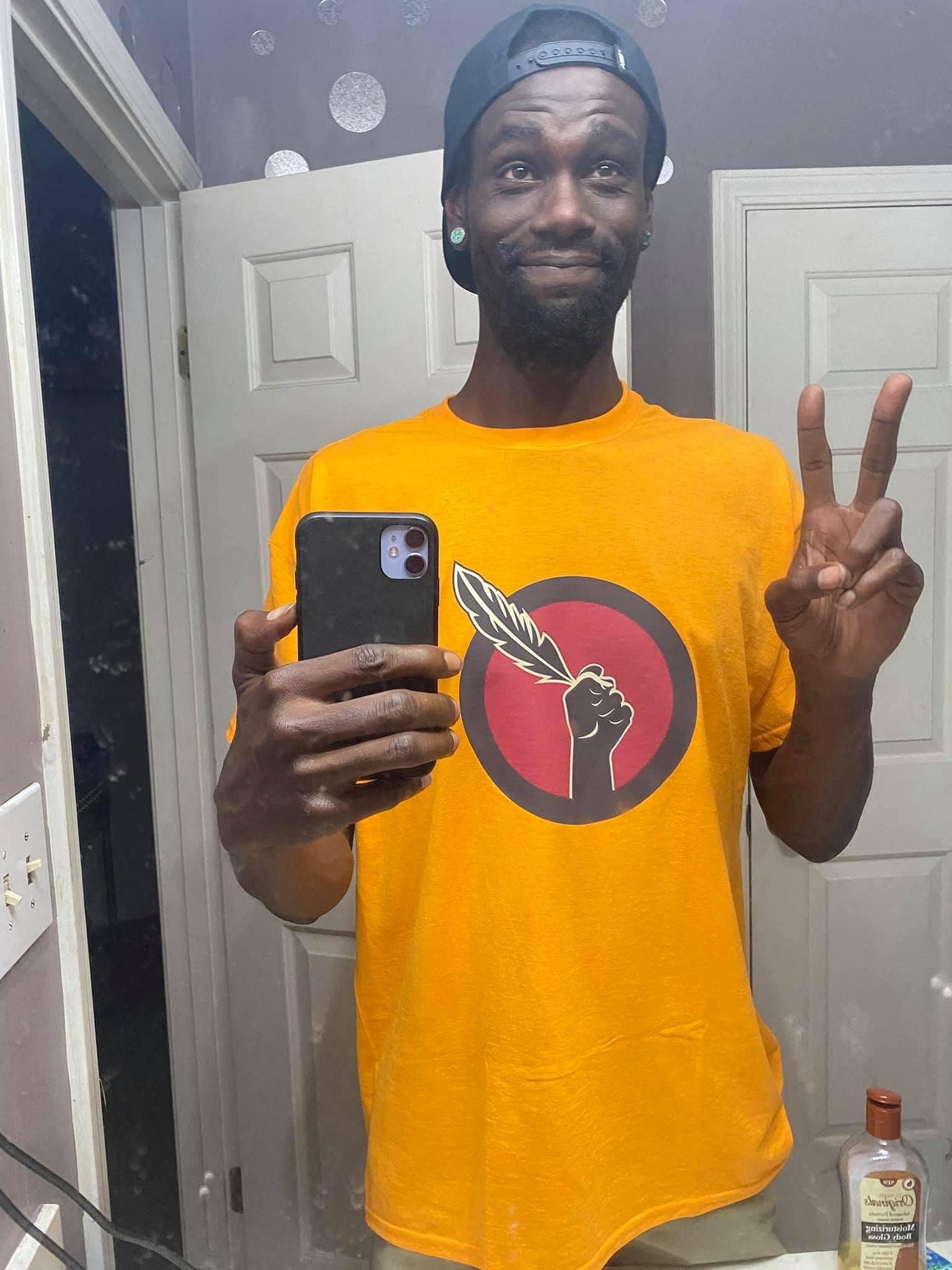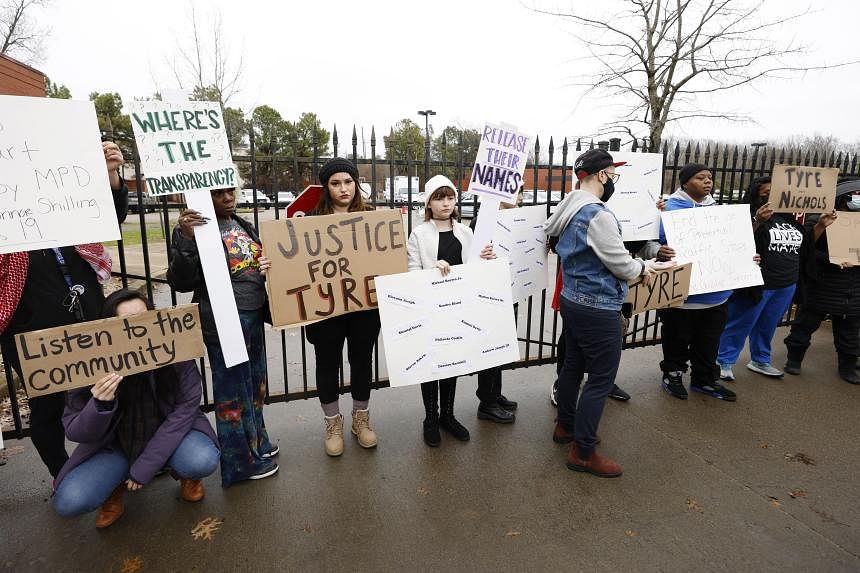NEW YORK - Police officers in Memphis, Tennessee, unleashed a barrage of commands that were confusing, conflicting and sometimes even impossible to obey, a New York Times analysis of footage from Mr Tyre Nichols’ fatal traffic stop found.
When he could not comply – and even when he managed to – the officers responded with escalating force.
The review of the available footage found that officers shouted at least 71 commands during the approximately 13-minute period before they reported over the radio that Mr Nichols was officially in custody.
The orders were issued at two locations, one near his vehicle and another in the area he had fled to and where he would be severely beaten.
The orders were often simultaneous and contradictory. Officers commanded Mr Nichols to show his hands even as they were holding his hands. They told him to get on the ground even when he was on the ground. And they ordered him to reposition himself even when they had control of his body.
Experts say the actions of the Memphis police officers were an egregious example of a longstanding problem in policing in which officers physically punish civilians for perceived disrespect or disobedience – sometimes called “contempt of cop”. The practice was notoriously prevalent decades ago.
“It was far more rampant in the ’80s when I started doing police work than it was in the ’90s or 2000s,” said Professor Geoffrey Alpert, an expert in criminology and criminal justice at the University of South Carolina. “Even before bodycams, cops were getting more professional and wouldn’t make it personal like it seemed to be in this case. This is just – it’s so far out of the norm.”
To mitigate the potential for escalation and confusion during police encounters, today’s police training typically calls for a single officer at the scene to issue clear and specific commands. It also requires police officers to respond professionally and proportionately to any perceived act of defiance.
But the Times’ review shows that the officers did the exact opposite, over and over.
The available footage does not show any sign that the officers present intervened to stop the aggressive use of force. If anything, it shows the contrary.
At one point, footage captured an officer saying “I hope they stomp his ass” after Mr Nichols’ attempt to flee the scene.
When asked for comment on the officers’ conduct at the traffic stop, a spokesman for the Memphis Police Department said: “All information that is available at this point has been released. However, know that this investigation remains ongoing.”
The Memphis Police Association also said it could not comment because of the ongoing investigation.
The Times’ analysis is based on footage from police bodycams and street cameras released by the city of Memphis and synchronised by the Times.
Here are four key moments in which officers punished Nichols for not complying with flawed commands.
Confusing orders
The footage begins with a police officer driving up to the intersection where Mr Nichols’ car had been boxed in by two unmarked police vehicles.
The officer jumps out with his firearm drawn and joins a pair of officers rushing towards the front seat.
One officer pulls Mr Nichols out of his car, and all three officers immediately start screaming, “On the ground!”
These are the first orders in the bombardment of confusing commands that confound Mr Nichols and prompt a cascade of retribution.
Mr Nichols points out that he is sitting on the ground, as the officers instructed him to do.

But multiple officers shout the same command over and over with intensifying frustration and physical threats.
“Get on the ground!” one orders. “I’m gonna tase your a**.”
It eventually becomes evident that the officers would like Mr Nichols not only on the ground but also lying down.
When Mr Nichols repositions himself, it appears to further antagonise the officers. He tries to convey that he poses no threat.
“You guys are really doing a lot right now,” he says. “I’m just trying to go home.”
With officers pinning down his arms, pressing a Taser against his leg and barking intensifying verbal threats, Mr Nichols explodes: “I am on the ground!”
Finally, one of the officers yells more specific instructions: “On your stomach.”
Three seconds later, one of the officers shoots pepper spray into Mr Nichols’ face.
Contradictory commands
After fleeing on foot, Mr Nichols is seen lying on the ground a few hundred metres away from his car, flanked by officers demanding that he give them his hands. But one of them is gripping his left arm, and the other is holding his right. It is not clear how the officers expect Mr Nichols to move.
Then a third officer runs up with a can of pepper spray.
“You’re about to get sprayed good,” he says. The others start punching Mr Nichols’ face.
Mr Nichols responds by pulling his hands back to protect himself. The punching intensifies, and the pepper spray is fired.
Wiping the pepper spray from his eyes, Mr Nichols tries assuring them that he is going to comply.
“OK,” he says. “All right. All right.”
But just as one of the officers gets hold of him, a new officer arrives and also demands that Mr Nichols give him his hands. Again, he is unable to follow the conflicting directions. He flails about, which only multiplies the police officers’ commands and the physical punishment they inflict. He is doused with pepper spray for a third time.
Orders not resisted

Two officers stand over Mr Nichols, who is lying on his side and rubbing his eyes after having been pepper-sprayed three times. An officer kicks Mr Nichols in the face. He appears to be barely conscious or coherent, but officers treat him as though he is resisting orders.
“Lay flat, goddamn it,” one officer commands.
Mr Nichols moans and writhes on the ground. By this point, he has been tased, kicked in the head twice and punched and pepper-sprayed repeatedly.
“Lay flat,” another officer shouts.
Mr Nichols is lying limp as an officer, without any apparent difficulty, snaps a pair of handcuffs to one of his wrists.
Impossible orders
Officers continue to issue commands while simultaneously constraining, controlling and beating Mr Nichols in ways that render it physically impossible for him to follow those commands.
One officer uses Mr Nichols’ handcuffed arm to pull his body from the ground and into a kneeling position. Then another officer strikes him with a baton three times, yelling, “Give us your hands!”
Surrounded by four officers, he tries to move away from the baton.
“Give me your f****** hands!” one officer shouts.
But Mr Nichols – with one officer pinning his arms behind his back, another gripping his handcuffed wrist and a third punching his face – cannot comply.
He doubles over and calls out for his mother. The blows continue.
Five officers have been fired and charged with second-degree murder. Lawyers for two of them said in a news conference last week that their clients intend to plead not guilty. NYTIMES

